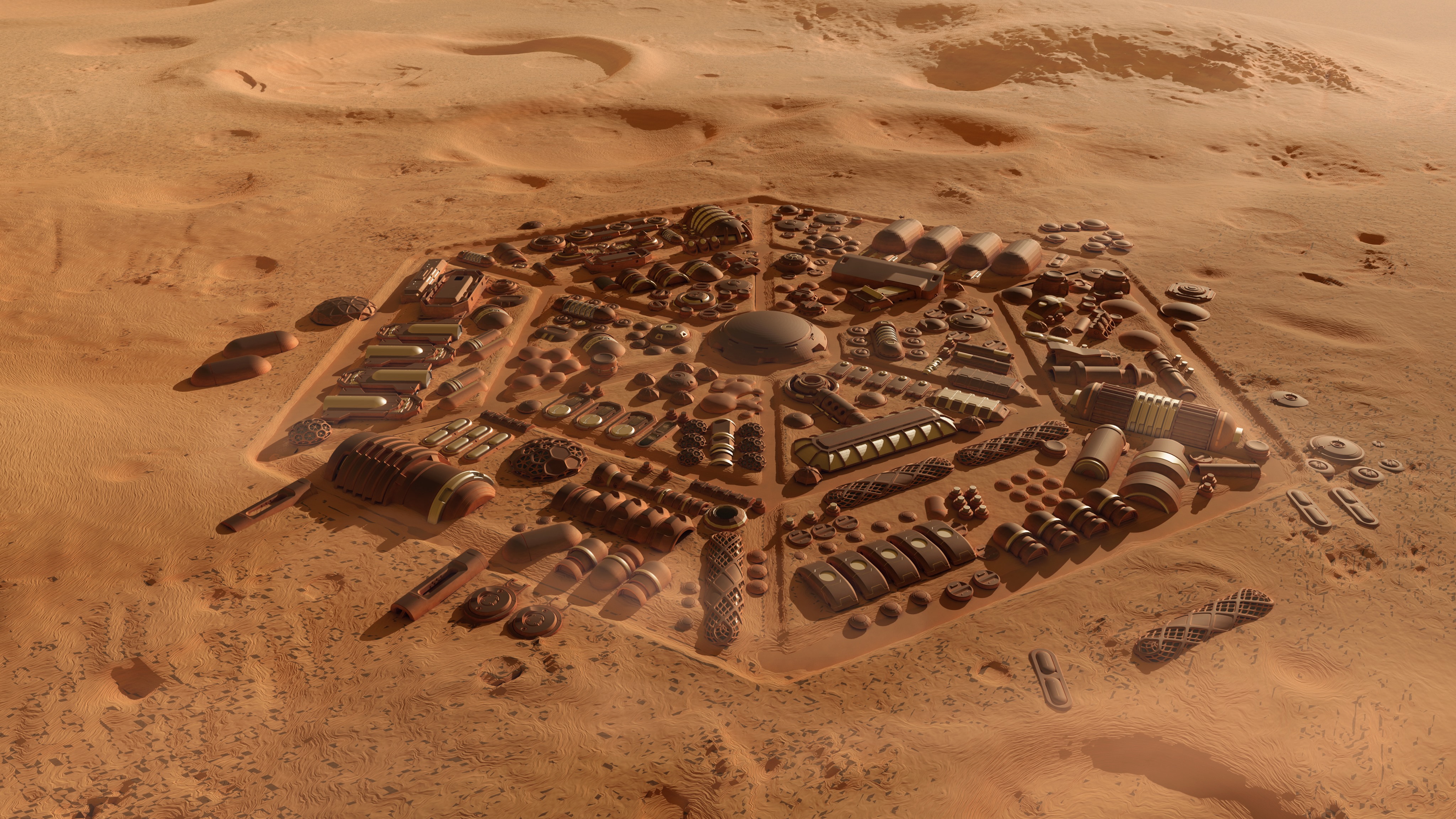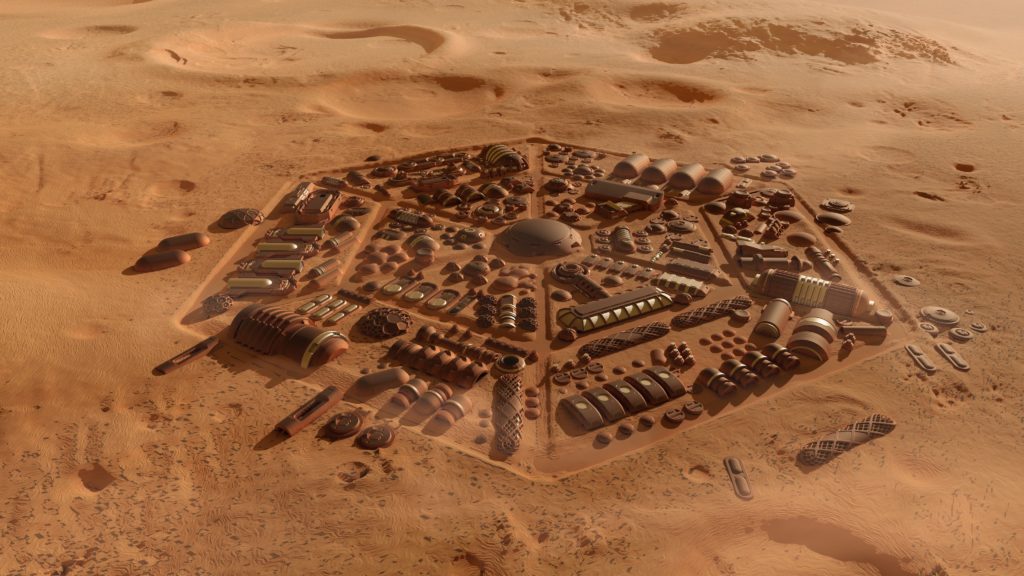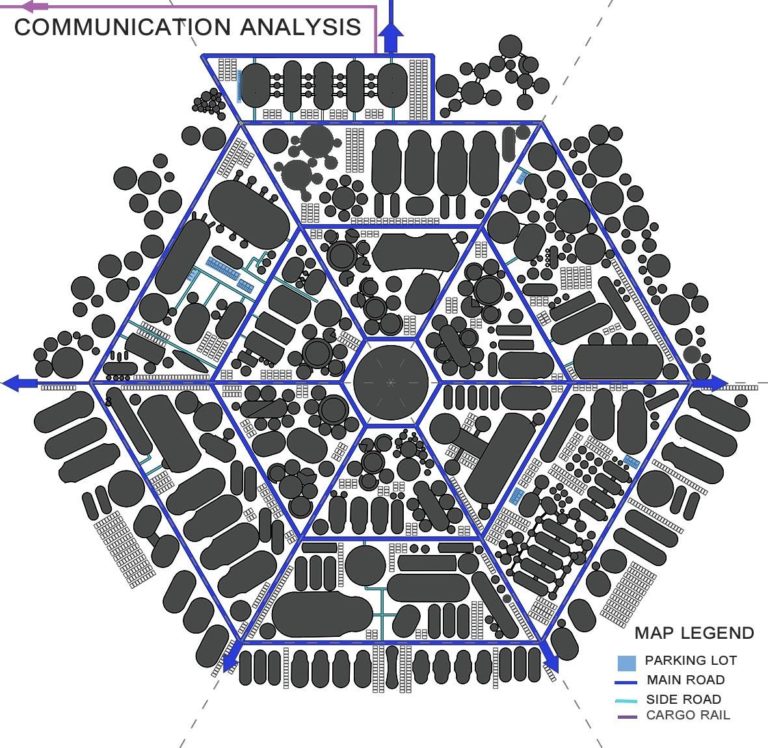
The press release and materials related to the project can be found at this link.
The project was supported by Soroptimist International First Club in Wroclaw.
Mars colony project in the final
of Mars Colony Prize competition
A project for a self-sufficient Martian colony for 1,000 people called Ideacity has qualified for the final round of the Mars Colony Prize competition organized by The Mars Society. The jury selected 25 best projects from 100 submissions, which will be published in the book “Mars Colonies: Plans for Settling The Red Planet”, and then the final ten, which presented their works during the finals in the USA. The Innspace group’s project called Ideacity was on the final stage, taking 5th place.

The Martian ideal city
“Creating a colony on Mars that provides its inhabitants with the same good conditions as on Earth is not easy. The difficulty is not only the technology, but also the functioning of the Martian society.” – Piotr Torchała, designer.
The Ideacity project uses the concept of an ideal city. The main features of our city are short distances (the city is on the plan of a hexagon with a side of 400 m), a center which is the main point of the whole colony and creation of a network of underground tunnels which allow to move around the city without being exposed to external conditions, as well as roads on the surface which allow to move vehicles with loads on the ground. Closer to the center are buildings used for daily functioning, industrial buildings are located on the outer part of the city. Most of the construction is underground to protect residents from radiation.

All aspects
We considered resource extraction and processing, manufacturing, energy generation, utilities, life support systems and agriculture. Our goal was to assign a specific role to each building and design it to fit the intended purpose.
“We revised our design many times. Successive analyses allowed us to refine all paths. As a result, the movement of both people and cargo within the colony is optimized.” – Beata Suścicka, architect on the project.
We have opted for maximum automation of the base. Due to the limited number of people in the colony (1000) and the need for self-sufficiency, we had to design the colony in such a way as to make as many aspects of the colony independent of humans as possible. We believe that the inhabitants of the future colony should focus as much as possible on creating the future, research and development of the base instead of doing work for which we could use robots or artificial intelligence.
We proposed the functioning of life support systems. An important point was to consider the Martian diet and how to produce food. We decided on a plant-based diet and the crops themselves occupy much of our city.
Not only construction, but also operation
However, the technical side of the project is only 40% of the points. Our project also had to take into account economic issues, the political system and colonial governance, social and cultural issues, and finally the aesthetics of the colony.

Results
The project placed 5th during the finals on October 19 in the US. Two days earlier we also presented three papers related to our project at the Mars Society Convention. We encourage you to follow our fanpage and Instagram, for a story about our trip.
Useful links:
Publication “Society on Mars based on example of Ideacity project“ (click to read)
Publication “Urban planning in space on the example of Ideacity project” (click to read)
Publication “Space industry on the example of Ideacity project” (click to read)

